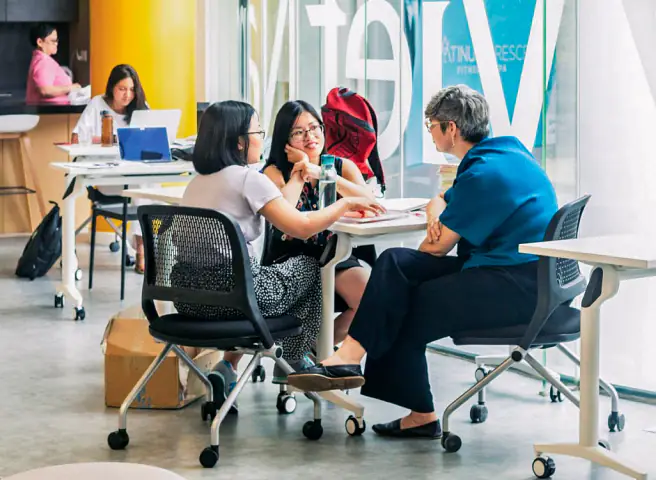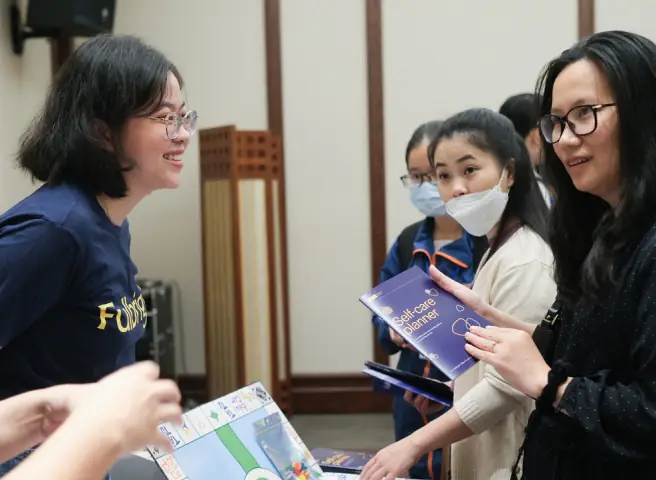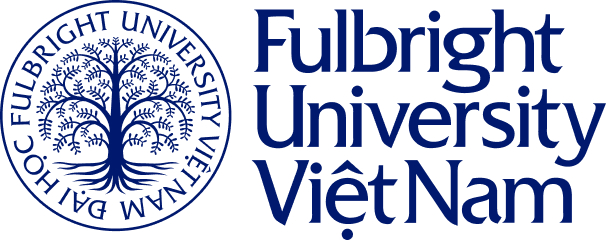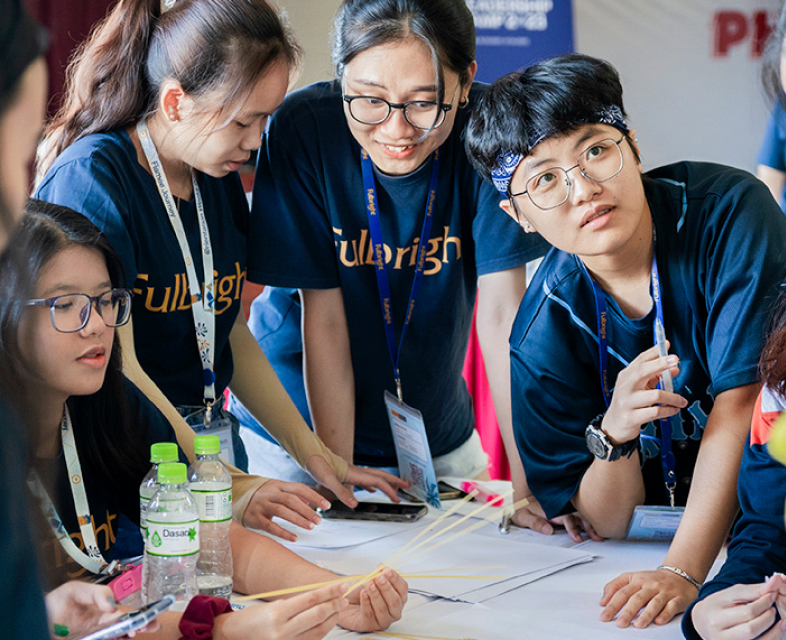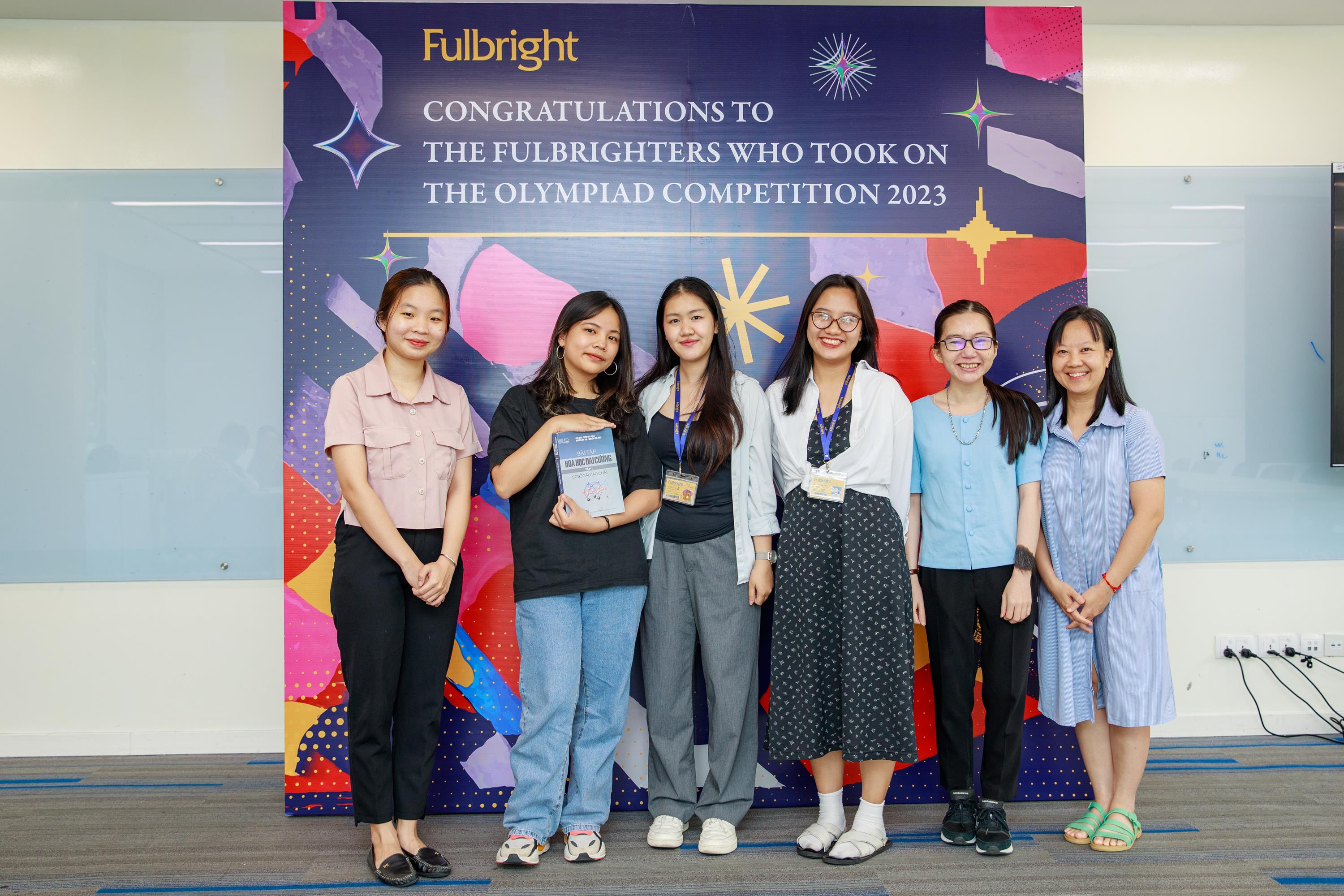
On Equality of Educational Opportunity
In many developing countries around the world, school fees and related education costs pose a significant barrier to children’s education, and are often linked to non-attendance, dropout, and the entry of children into child labor. In Vietnam, the situation is not that much of a difference.
According to Circular number 86/2015/ND-CP issued by the government, the school fees for a child to go from pre-school to university in the public-school system is, on average, VND112,550,000 (USD4,826.33). This means that, for one child, an average Vietnamese family needs to pay roughly VND75,000 ~ VND155,000 (USD3.22 ~ USD6.65) per month for K-12 education and VND2,200,000 (USD94.34) per month if their child makes it to university.
It may not look a lot but for such a developing country as Vietnam, that number can be a fortune for many families. On average, the Vietnam GDP per capita is USD2,566. In other words, for a nuclear family with two children, the school fees alone can cost up to 25-45 percent of the total household income. In addition to school fees, costs associated with uniforms, shoes, books, transportation fees and extra classes are obstacles to education for children.
To exacerbate the problem, according to the Ministry of Labor, Invalids and Social Affairs, economic inequality is worsening in Vietnam. In 2014, the top 20% make 9.7 times more than the bottom 20%. This increased to 10 times in 2018, said Deputy Prime Minister Vuong Dinh Hue. The growing economic inequality means that the educational achievement gap between the children of the wealthiest and the children of everyone else is widened even further.

Many poor families pull their children out of primary school because they cannot afford the cost of the school fees and education materials, or because they need the child to work in the fields or to earn money. Those who are lucky enough to stay in school may find it hard to catch up with their classmates from wealthy families because they cannot afford to go to extra classes or language classes. Those who complete high school are less likely to attend college than students from higher-income families. For some children, the effects of poverty on education present unique challenges in breaking the cycle of generational poverty and reduce their chances of leading rewarding, productive lives.
This widening educational achievement gap may threaten Vietnam’s economic growth. With only a select few individuals receiving the best education and enrichment, Vietnam cannot effectively develop the economic potential of its future workforce. To grow the economy, there exists a need to provide educational and enrichment opportunities for children across the income spectrum, rather than only a select few at the top. The important question is how.
Scholarships
There are ample proposals and rich debate on how to combat educational achievement gap and ensure more low-income students can get access to proper education. One of those proposals is scholarships, especially scholarships for higher education. Scholarship supporters argue that by offering scholarships to low-income students, schools and universities can target specific audience, widen opportunities and improve outcomes. However, most scholarships in Vietnam are merit-based, meaning students with high academic achievements have higher chance of getting a scholarship.
This brings us back to the discussion on academic opportunities. Wealthy families can more likely afford a variety of positive adolescent activities, such as prep-school, language classes, sports participation, school leadership, extracurricular activities and volunteer work, for their children. These activities broaden their experience and academic achievements, make them more well-rounded and place them at the top of the merit-based scholarship recipient list.
Moreover, low-income students, especially those from the provinces, do not have much access to the scholarships available to them. Due to this information gap, high-achieving low-income students do not even apply to the scholarships for which they are qualified. Thus, some may argue that scholarships, instead of solving the problem of inequality, only worsen it if they are not properly designed and implemented.
Affirmative action
In Vietnam, to ensure specific aims of equity of and access to tertiary education can be met, some key policies have been created and implemented. For example, students from special groups will enjoy extra points for their National High School Exam. These groups include: students from remote and mountainous areas (namely Region 1), from rural area (namely Region 2-NT), and students whose parents are ethnic minorities or veterans with disabilities.
Another example is the University Entrance Nomination policy, in which every year a number of students from disadvantaged provinces may be nominated to enter the assigned public universities without participating in any university entrance exams. The number of students is proposed by the provincial governments based on their socio-economic development level. These students, however, are still required to pass the national upper secondary exams as well as pursue an intensive one-year education before entering normal university courses. Ethnic minority students are given preference when the provincial governments make their selections.

While affirmative action such as these policies may improve diversity in the university, Professor Michael Sandel, the author of the famous book Justice, argues that it brings two problems – one practical, the other principled. The principled objection reasons that affirmative action causes unfair in admissions and violates the rights of applicants who are qualified but belonged to the majority group. These students may have higher academic achievements than the affirmative-action students but are put at a competitive disadvantage through no fault of their own.
The practical objection claims that affirmative action may “damage the self-esteem of minority students, increase racial consciousness on all sides, heighten racial tensions, and provoke resentment” among the majority group. This view is also shared by Malcolm Gladwell, the author of David and Goliath. According to Gladwell, students benefited from affirmative action may not really benefit from it. Being among peers who are more academically equipped, these students may feel insecure, left-out, and unsuccessful. It may even result in drop-out for some.
Free education
In Justice, Professor Sandel mentions that to bridge the inequality gap, “a politics of the common good would take as one of its primary goals the reconstruction of the infrastructure of civic life.” This includes investing in top-quality, free public schools to which rich and poor alike would want to send their children.
In a perfect world, free education can help to reduce the financial burden from the students and encouraging them to get enrolled into higher education more actively. However, the world is not perfect and there are limitations to this solution.
It is undeniable that, managing higher education without taking any tuition fees is difficult for the schools. These schools have to get support from the government to maintain their academic and infrastructural costs. Such substantial public financing results in higher tax and cannot be easy to come by in the near future.
Thomas Piketty in his book Capital in the 21stCentury argues that free education leads to “spending more public money on students from more advantaged social backgrounds, while less money is spent on university students who come from the modest background.” One of the reasons for this outcome is that free education does not include free cost of living. Most universities are located in big, urban cities where the cost of living can pose as a barrier for low-income students. Since tuition isn’t the only driver of college affordability, simply eliminating tuition expenses would still leave low-income students with unmet need for living expenses—the real cost of higher education for the majority of students.
So what can be done to reduce educational inequality and promote access to higher education for poorer households? While free education can be a great policy, it takes time to be implemented, tested and perfected. Educational disadvantage has built up over decades and it will take decades to fix it.
In the meantime, it requires a combination of effort, financing and skills to address the short-term solution: Aid.
Aid
In order to improve diversity and offer more opportunities for low-income students to access to education, schools and universities should consider providing the appropriate form of aid prior to, during, and after admissions. This is also the practice that Fulbright University Vietnam (Fulbright) follows in the hope to fulfill its mission to the Vietnamese society.
To bridge the information gap, Fulbright conducts outreach activities to high schools across the country. The objective of this program is to put Fulbright within the reach of any student no matter how financially unattainable a goal it may seem, by giving them the right information and guidance needed to understand the opportunity and the application process.

Fulbright also provides buses for schools in the provinces to come to its admissions events, which are organized in key cities of Vietnam, and at Fulbright campus. These activities give the students a taste of the life at Fulbright, extra-curricular activities, and demo classes instructed by the University’s undergraduate and graduate faculty.
The Fulbright Admissions team also provide help to interested students who indicated an existing interest in studying at Fulbright but were not sure about acting on that interest due to lack of knowledge or financial resources to attend university and/or not being familiar with the steps involved in applying to Fulbright and for financial aid.
Fulbright’s admission process is inspired by prominent American institutions, but mindful of the Vietnamese cultural, social and educational background. Taking into account the imminent educational achievement gap, Fulbright University has designed an application package that is unique and exciting. It allows every student to demonstrate who they really are. Fulbright’s evaluation process is also designed in a way that every student is considered fairly, regardless of their socioeconomic status.
Fulbright is also the first university in Vietnam to offer a need-based financial aid, which is solely awarded based on a family’s financial circumstances and does not take into account a student’s academic merit. This need-based financial aid package covers not only the tuition fees, but also the living expenses to mitigate the barriers for low-income students to attend Fulbright.
Once admitted, Fulbright students also receive many other forms of aid to help them complete their four-year journey at Fulbright without feeling insecure about their capabilities. For those seeking added language support prior to starting the undergraduate program, Fulbright has a seven-week Bridge Program that runs the summer prior to the start of classes. Throughout the four-year, should a student feel struggle with his or her academic work or personal issues, the Learning Support team and the Wellness Center will provide them with appropriate aid, either in the form of private counseling sessions or mentorship.
At Fulbright, we believe knowledge is for everyone, and education must be accessible for the students from every status. Every person has the right to acquire knowledge as much as he or she wants. The journey to ensure equality in education is a long one, but it should not deter us to initiate the first step.
Thach Thao
